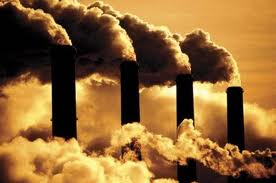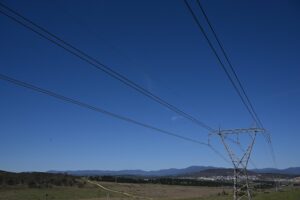Less than a week before US President Barack Obama is due to table the Environmental Protection Agency’s updated draft carbon standards for existing coal and natural gas power plants, new data has confirmed that the five-year decline in US carbon dioxide emissions has not only ended, but reversed. And dramatically so.
Up until the end of 2012, carbon emissions from the consumption of fossil fuels in America had been declining, coming down from a record high in 2007 to be 12.52 per cent lower in 2012 than five years earlier.
But this trend has now reversed, according to the Energy Information Administration (EIA) – a semi-independent wing of the US Department of Energy – which announced on Wednesday that the nation’s energy-related emissions in 2013 were up by around 2.4 per cent over 2012, and by around 7.45 per cent in the first two months of 2014 than for the same period in 2013.
The majority of this increase has been attributed to expanded coal use, with coal-related CO2 emissions said to have risen 4.17 per cent in 2013 compared to 2012, and 11.93 per cent for January-February 2014, compared to those months in 2013. Coal accounted for 31.93 per cent of CO2 emissions in 2013, according to the EIA.
End-use sectors also appeared to be major contributors, the report showing that emissions from the US residential sector rose by 4.79 per cent in 2012, and 15.32 per cent in the first two months of 2014. In the commercial sector, emissions rose by 2.79 per cent in 2012 and 10.47 per cent in the 2014 period. And in the electric power sector, 0.88 per cent and 11.48 per cent, respectively.
The timing of this report further tightens the screws on the US power sector, who could see the game changed with Monday’s deliverance of the historic new EPA standards – the first to cap the amount of greenhouse gases power plants are allowed to emit.
As noted on the Union of Concerned Scientists blog, the standards will build on the ongoing transition away from coal-fired power to cleaner, increasingly cost-competitive generation sources like natural gas, wind and solar energy, and energy efficiency. (Although the EIA report indicated that CO2 emissions from natural gas have also been rising: by 2.13 per cent in 2013 compared to 2012, and 9.97 per cent for the first two months of 2014 compared to January-February 2013. Natural gas accounted for 25.79% of CO2 emissions in 2013.)
The EPA has signaled that it will be allowing renewable energy and energy efficiency to count as compliance mechanisms for the carbon standard. If confirmed in the draft rule, it has been argued that this provision would provide a significant opportunity for states to make deep reductions in their emissions in a flexible, cost-effective manner – as well as helping them to avoid the climate (and economic) risks of an over-reliance on gas.
Ken Bossong, executive director of America’s SUN DAY Campaign, said the EPA changes were well timed, in light of the World Meteorological Organization’s report that global CO2 levels had reached a landmark in April, topping 400 parts per million in the northern hemisphere.
“Clearly, the anticipated release on June 2 of the U.S. Environmental Protection Agency’s first-ever proposed rule limiting carbon dioxide pollution from existing power plants is not happening a minute too soon and much more needs to follow,” Bossong said on Wednesday.








